‘Remarkable’ Roman villa is discovered in Oxfordshire: archaeologists discover aisled building next to a hoard of artefacts including ‘curse tablets’, belt buckles and coins
Archaeologists have discovered a ‘remarkable’ Roman villa in Oxfordshire during preparations for a new housing estate.
The historic building at Brookside Meadows in the village of Grove, Wantage was once richly decorated with painted plaster and mosaics, typical of the Roman style.
Experts think it was an aisled building – a kind of rectangular Roman villa divided into a primary central area and two flanking aisles, somewhat like a church.
The site is also home to a wealth of artefacts, including Roman ‘curse tablets’, belt buckles and coins.
Excavations are still ongoing, but eventually houses will be built over the remains.
Archaeologists from the Red River Archeology Group working on a Barratt and David Wilson Homes housing development in Oxfordshire found a remarkable Roman villa complex
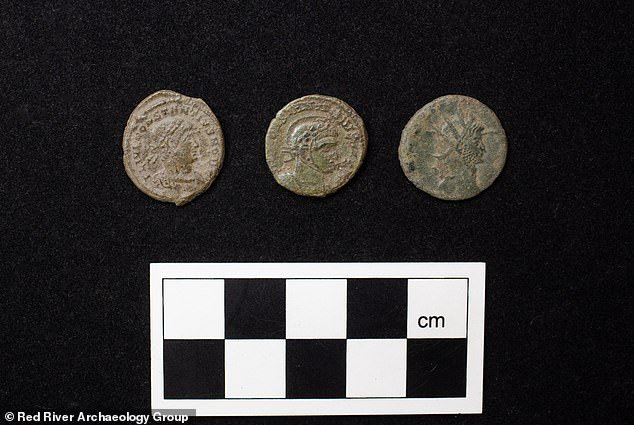
Roman coins discovered at the site. The Roman coin came into use around 300 BC, centuries after it emerged throughout the Greek world
Archaeologists from the Red River Archeology Group made the findings during the preparation of a new housing development at Barratt and David Wilson Homes.
According to the experts, the site is located in a landscape that has been inhabited since the Bronze Age, a period that lasted from about 3300 BC to 1200 BC.
It is believed that the Romans – who invaded Britain in 43 AD – were there from the first or second century until the late fourth or fifth century AD.
“The site is much more complex than a typical rural site,” said Francesca Giarelli, project officer at Red River Archeology Group.
‘It has clearly been an important center of activity for a long time, from the Bronze Age to later Roman times.’
Remains show that the Roman villa was richly decorated with painted plasterwork and mosaics of floral motifs, while an ‘complex’ brick floor can still be seen.
Hundreds of coins, rings and brooches were also found at the site, as well as a horse head belt buckle from the period 350-450 AD.
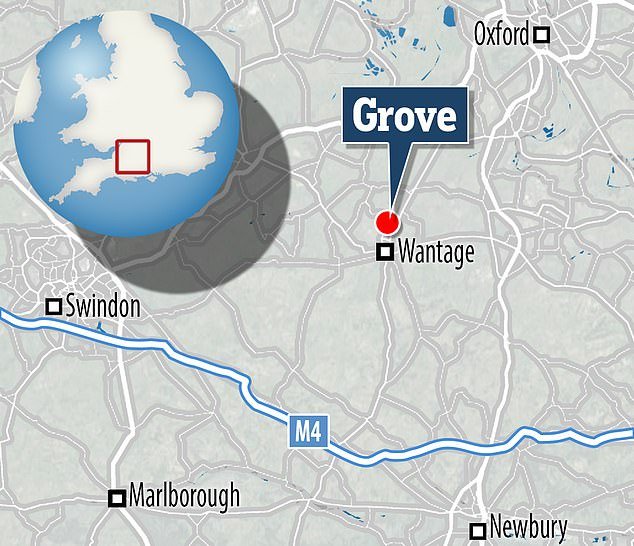
The site was uncovered during excavation work in preparation for a new housing development in Grove, Oxfordshire
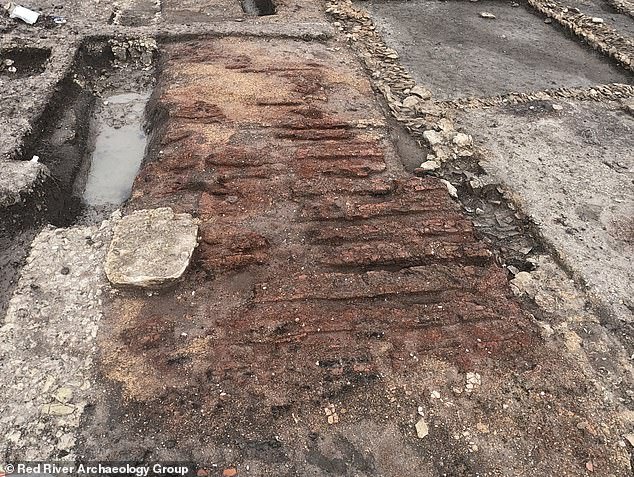
The remains of the villa at Grove, Wantage are located in a landscape that has been inhabited since the Bronze Age. In the photo the ‘complex’ brick floor
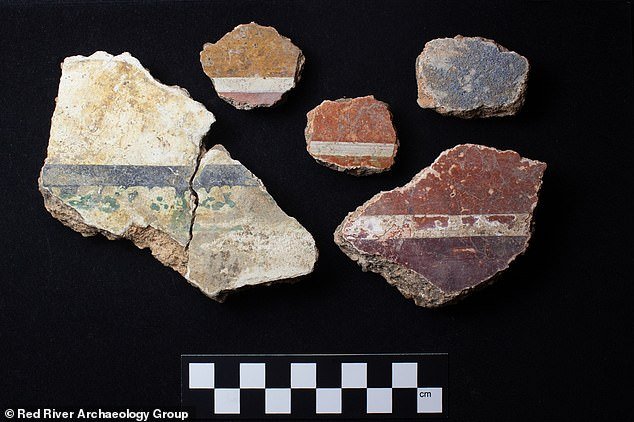
Remains show that the Roman villa was richly decorated with painted plaster and mosaics of floral motifs
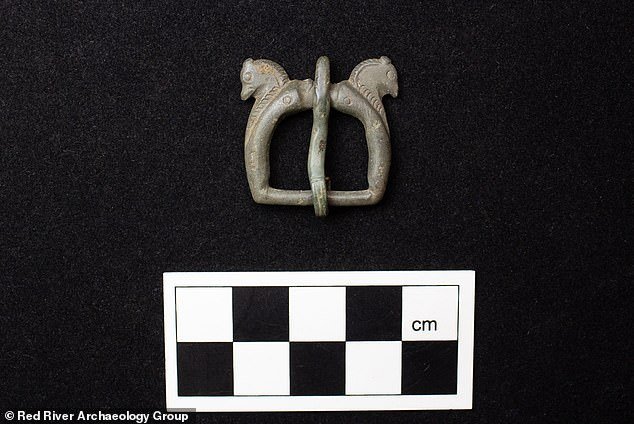
Researchers say this horse head belt buckle likely belonged to an elite member of the Roman army, or someone who wanted to be associated with the Roman army
Researchers say this buckle likely belonged to an elite member of the Roman army, or someone who wanted to be associated with the Roman army – a form of ‘military chic’.
Fragments of Roman chimney tiles were also found – special types of tiles that allowed the circulation of warm air through the walls and under the floors.
The system, known as hypocaust, was used in bathhouses and heated rooms, and is an example of the ingenuity of the Romans when it came to creating new domestic systems.
There were also suspected fragments of Samian pottery, also known as ‘terra sigillata’, the fine tableware of Roman Britain.
In the field of trinkets, experts discovered miniature votive axes – small axes that were probably used as offerings to the gods.
These could have been deposited in a sacred area, usually to ask favor for the crops or harvest.
Most intriguing of all is the discovery of tightly rolled lead scrolls that, although empty when unrolled, are reminiscent of the famous Roman ‘curse tablets’.
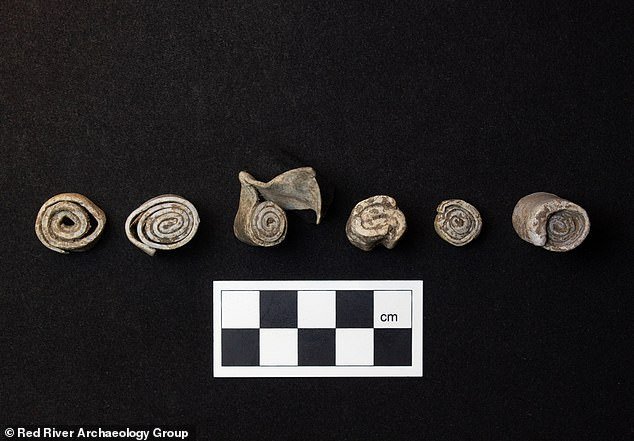
Most intriguing of all is the discovery of tightly rolled lead scrolls that, although empty when unrolled, are reminiscent of the famous Roman ‘curse tablets’. Roman curse tablets were vengeful messages written on small sheets of lead or tin, asking gods and spirits to act on their behalf
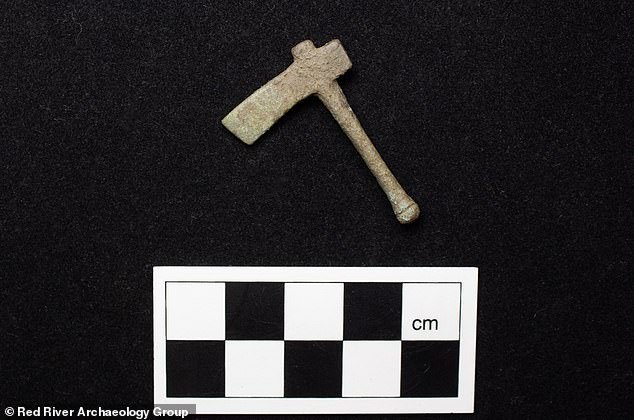
experts have uncovered miniature votive axes – small axes that were likely used as offerings to the gods. These could have been deposited in a sacred area, usually to ask favor for the crops or harvest
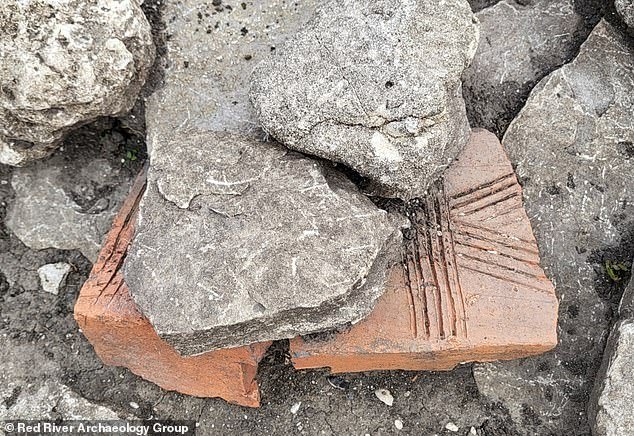
Fragments of Roman chimney tiles – specialized type of tile that allowed the circulation of warm air through the walls, used in bathhouses and heated rooms
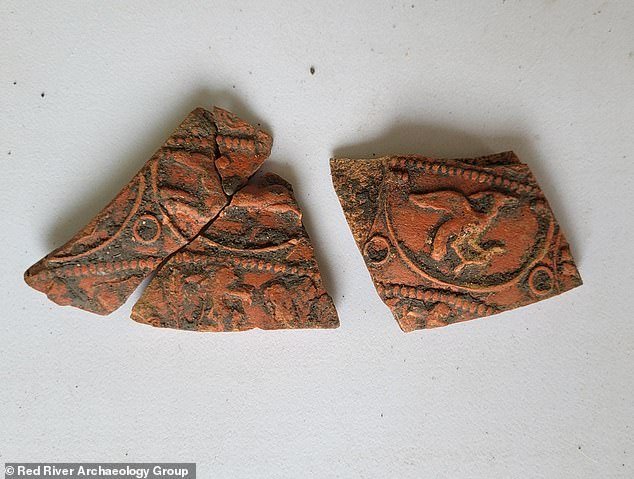
There were also suspected fragments of Samian pottery, also known as ‘terra sigillata’, the fine tableware of Roman Britain
The Roman curse tablets were vengeful messages, engraved on small sheets of lead or tin, asking gods and spirits to act on their behalf.
The presence of both the curse tablets and the miniature votive axes suggest a pilgrimage or ritual element somewhere at the site.
Despite the historical significance of the Brookside Meadows site, it will still be prepared for a new collection of homes.
Barratt and David Wilson Homes are working with archaeologists to conduct ongoing excavations at the site.
